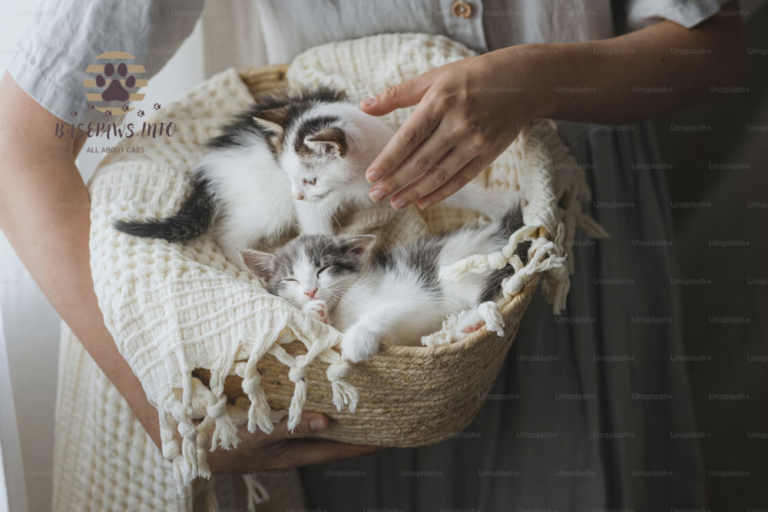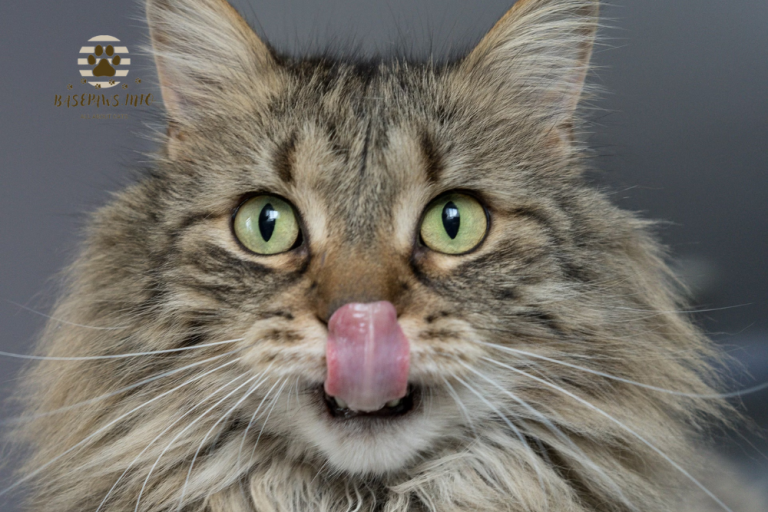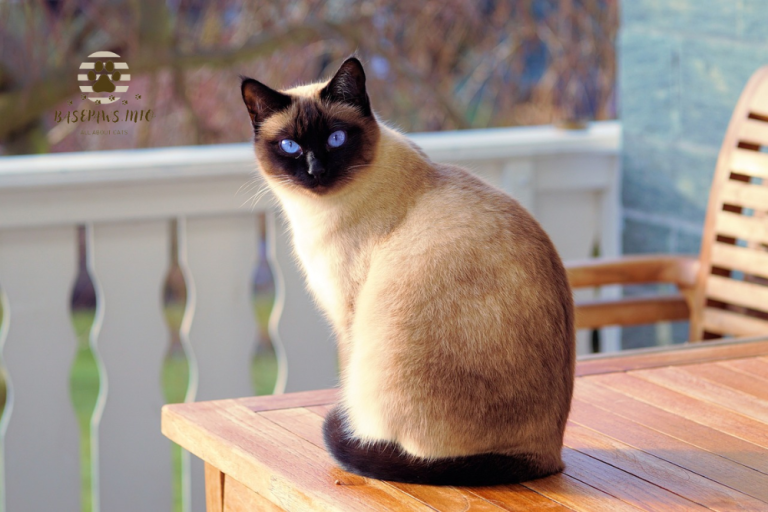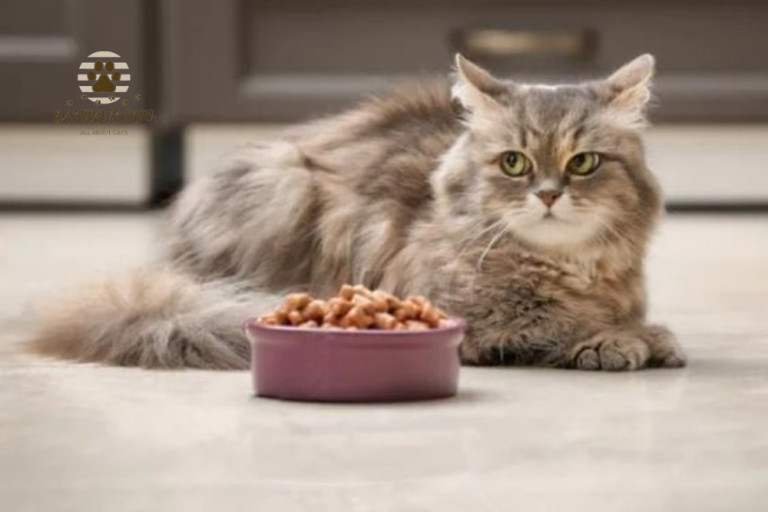Cats Body Language and Health: A Complete Guide to Recognizing Your Cat’s Illnesses
Introduction
As a cat owner, it can be difficult to understand when your feline friend is happy, stressed, or feeling under the weather. Cats are known for hiding their pain or discomfort, making it crucial for pet owners to recognize subtle changes in behavior or body language. Misreading these signs could lead to missed opportunities for early intervention, which can worsen their condition.
Luckily, cats body language provides a valuable way for them to communicate, giving you plenty of cues to decode their emotions and health status. From their ears to their tails, understanding these signals can help you detect when something is wrong. By recognizing these signs early, you can ensure your cat receives the necessary care, preventing serious health complications down the road.
Why Do Cats Communicate Through Body Language?
Cats are masters of subtle communication. Unlike dogs, who may bark or wag their tails with excitement, cats use body language to express their emotions and needs. Their posture, tail movement, ears, and eyes all tell a story. Understanding these signals can help you build a better relationship with your cat and keep them healthy.
Understanding Cat Illnesses and Early Detection
Cats are notorious for hiding illness, but by closely observing their behavior and body language, you can catch early signs before the situation worsens. The key is to stay attentive to changes in posture, grooming, and daily habits. Early detection can prevent minor health issues from escalating into severe conditions.
Recognizing Healthy Cats Body Language
To understand if your cat is healthy, observe their everyday behavior. A happy and healthy cat will display the following:
| Body Part | Healthy Behavior |
| Body Posture | Relaxed, upright, or stretched out |
| Tail Position | Slightly raised, sometimes with a curled tip |
| Ears | Forward or slightly relaxed |
| Eyes | Half-closed or soft blinking |
| Whiskers | Relaxed, pointing sideways |
Body Posture: What It Reveals
A cat with a relaxed and upright posture feels secure and comfortable in their environment. On the other hand, a cat crouched low or hiding may be experiencing stress.
Tail Position: Happy vs. Stressed
A raised, gently curved tail indicates a content cat. If the tail is low or puffed up, your cat might be feeling anxious or defensive.
Ears: Signaling Emotions
Forward-facing ears show curiosity, while flattened ears can indicate fear or aggression.
Eyes: Window to Their Mood
A slow blink is your cat’s way of showing trust, while dilated pupils can signal excitement or fear.
Whiskers: Indicators of Comfort
Whiskers that are relaxed and in a neutral position show your cat is at ease. Forward-facing or pulled-back whiskers might indicate discomfort or fear.
Signs Your Cat May Be Sick
Cats are masters at hiding their illnesses, so paying close attention to subtle changes in their behavior and cats body language is key to catching problems early. Here’s a detailed guide to help you spot potential signs of illness in your cat:
Changes in Body Posture
A healthy cat typically has a relaxed, confident posture. However, when a cat is unwell, their posture can shift in noticeable ways.
- Tense posture: A cat that is crouched down, with their back arched or muscles tight, may be experiencing pain or discomfort. This position is often seen in cats suffering from abdominal pain or respiratory issues.
- Limp or hunched posture: A hunched or limp body posture, where the cat keeps their head low and body tight, is a common sign of illness. Cats with digestive problems, such as constipation or gastrointestinal discomfort, often adopt this posture.
- Lethargy and unsteady gait: If your cat suddenly becomes lethargic or has difficulty walking, it could be due to weakness, injury, or even neurological issues. An unsteady gait, or wobbling when walking, might indicate balance problems or inner ear infections.
Tail, Ear, and Eye Expressions
Cats communicate a lot through their tails, ears, and eyes. When your cat is sick, these signals can change dramatically.
- Tail: A cat that holds its tail low or tucks it between its legs may be feeling anxious or unwell. A constantly twitching tail could signal irritation or pain.
- Ears: Healthy cats keep their ears forward or relaxed. Flattened ears or ears that constantly swivel may indicate discomfort or fear. Cats in pain often pin their ears back, especially when touched.
- Eyes: A sick cat may have dull, glassy eyes or dilated pupils. Cats in pain tend to squint or keep their eyes partially closed. Discharge from the eyes, such as mucus or tearing, could indicate infections like conjunctivitis or other eye conditions.
Behavioral Changes: Loss of Playfulness and Social Engagement
When cats are sick, their energy levels and social behaviors often change.
- Loss of playfulness: If your cat suddenly loses interest in toys or activities they once enjoyed, it could be a sign that they’re not feeling well. Decreased activity levels often point to fatigue or underlying pain.
- Social withdrawal: A normally social cat that suddenly hides, avoids interaction, or becomes more reclusive might be unwell. Cats often retreat to quiet places when they are not feeling well, trying to avoid stress or stimulation.
Grooming Habits: Excessive or Poor Grooming
Changes in grooming behavior are a strong indicator of a cat’s health status.
- Excessive grooming: Cats who constantly lick or chew at specific areas may be trying to soothe pain or irritation. Overgrooming is often linked to skin allergies, infections, or stress. Cats with conditions like flea infestations may chew or bite at their fur more than usual.
- Poor grooming: Cats that stop grooming altogether may be ill or experiencing depression. Poor grooming habits can lead to a dull, unkempt coat. This is common in elderly cats or those with arthritis, making it difficult for them to maintain their hygiene.
Appetite and Thirst Fluctuations
Significant changes in eating or drinking habits are red flags for illness.
- Loss of appetite: If your cat refuses food or shows a drastic reduction in appetite, it may indicate a gastrointestinal issue, dental pain, or an underlying illness such as kidney disease.
- Increased thirst: Cats who drink more water than usual could be suffering from conditions like diabetes, kidney disease, or hyperthyroidism. Increased thirst often accompanies increased urination, so pay attention to changes in litter box behavior.
Litter Box Habits: Diarrhea, Constipation, or Urination Changes
A cat’s litter box habits provide valuable clues about their health.
- Diarrhea or constipation: Diarrhea can be a sign of gastrointestinal upset, infections, or food intolerances, while constipation may indicate dehydration, poor diet, or more serious conditions like an intestinal blockage.
- Urination changes: Straining to urinate, frequent trips to the litter box, or urinating outside the box can be signs of urinary tract infections (UTIs) or more severe issues like urinary blockages, which require immediate veterinary attention. Changes in urine color or the presence of blood are also urgent signs to monitor.
Vocalization and Sleeping Pattern Shifts
Changes in how often your cat vocalizes or their sleep habits can reveal a lot about their health.
- Increased vocalization: Cats that meow more than usual, especially if the meows sound distressed or louder, may be trying to communicate pain or discomfort. Older cats with conditions like hyperthyroidism or cognitive decline may also vocalize excessively.
- Sleeping pattern shifts: Cats are known to sleep a lot, but drastic changes in their sleep habits can be concerning. Cats that sleep far more or less than usual, or sleep in unusual positions, may be unwell.
Physical Signs: Vomiting, Discharge, and Hair Loss
Finally, look out for visible physical symptoms that often indicate illness.
- Vomiting: While occasional vomiting may not be serious, frequent vomiting is a sign that something is wrong. Causes range from hairballs to more severe gastrointestinal problems or poisoning.
- Discharge: Discharge from the nose, eyes, or mouth may point to infections, dental disease, or respiratory problems. Green or yellow discharge usually indicates infection.
- Hair loss: Bald spots or areas where the fur is thinning could be due to overgrooming, skin infections, allergies, or parasites like fleas and mites. Hair loss can also signal underlying medical conditions, such as thyroid problems.
Preventing Illness in Cats
Prevention is key to keeping your cat healthy and minimizing the risk of illness. Implementing a few essential practices can help ensure your feline friend leads a long and happy life.
Routine Veterinary Visits for Checkups
Regular veterinary visits are crucial for maintaining your cat’s health. Here’s why:
- Early Detection: Routine checkups can catch potential health issues before they become serious. Your veterinarian will perform physical exams, recommend vaccinations, and conduct blood tests to monitor organ function.
- Parasite Control: Regular visits help ensure that your cat is protected against parasites like fleas, ticks, and worms, which can lead to more severe health problems if left untreated.
- Dental Health: Dental examinations are vital since oral health is often overlooked. Regular cleanings and checkups can prevent periodontal disease, which can lead to systemic health issues.
- Behavioral Advice: Your vet can provide guidance on behavioral concerns, helping you manage any issues that may arise as your cat ages.
A Balanced Diet and Proper Hydration
Feeding your cat a balanced diet and ensuring proper hydration are fundamental components of their overall health.
- Quality Cat Food: Choose high-quality cat food that meets the nutritional requirements for your cat’s age, size, and health status. Consult your vet for specific dietary recommendations based on your cat’s individual needs.
- Hydration: Cats can be prone to urinary tract issues, so ensure they have constant access to fresh water. Some cats prefer running water, so consider a pet water fountain to encourage them to drink more.
- Weight Management: Obesity can lead to a range of health problems, including diabetes and joint issues. Monitor your cat’s weight and adjust their diet and exercise accordingly to maintain a healthy weight.
Reducing Stress with Toys, Scratching Posts, and Comfortable Resting Spots
Cats are sensitive creatures, and reducing stress in their environment is vital for their overall health.
- Interactive Toys: Provide a variety of toys that stimulate your cat mentally and physically. Engaging your cat with toys encourages exercise and prevents boredom, which can lead to behavioral issues.
- Scratching Posts: Scratching is a natural behavior for cats. Providing dedicated scratching posts can help prevent destructive behavior and ensure your cat’s claws remain healthy.
- Safe Spaces: Ensure your home has safe, quiet resting spots where your cat can retreat when they feel stressed. This might include cozy cat beds or quiet corners where they feel secure.
How to Comfort a Sick Cat
If your cat is feeling unwell, providing comfort and support can help them recover faster. Here are some effective strategies:
Create a Quiet Space for Them to Rest
Cats need a calm environment to recuperate from illness. Here’s how to set up a comforting space:
- Quiet Area: Designate a quiet, low-traffic area in your home where your cat can rest without interruptions. This space should be away from loud noises, other pets, and household activity.
- Cozy Bedding: Provide soft, warm bedding to make them feel secure and comfortable. Consider using blankets or a heated pad if your cat enjoys warmth.
- Temperature Control: Ensure the room temperature is comfortable. If your cat is feverish or feeling cold, adjust the environment to suit their needs.
Perform a Consent Test to See if They’re Comfortable with Petting
When your cat is unwell, it’s crucial to respect their comfort levels:
- Observe Cats Body Language: Before attempting to pet your cat, observe their body language. Look for signs that they are open to interaction, such as slowly blinking or leaning into your hand.
- Gentle Approach: Approach your cat slowly and gently, allowing them to sniff your hand first. If they lean in for more or purr, they may appreciate your touch.
- Know When to Back Off: If your cat withdraws, hisses, or swats at you, respect their space and give them time to relax without pressure.
Stick to a Routine, Offering Soft Bedding and Easy-to-Eat Food
Consistency helps your cat feel more secure when they are unwell:
- Daily Routine: Keeping to a daily routine can provide stability, which is comforting to cats. Try to maintain feeding times, playtime, and quiet time.
- Soft Bedding: Provide multiple soft resting areas with familiar scents. Cats often feel more comfortable in spaces that smell like them or their owners.
- Easy-to-Eat Food: If your cat is unwell and reluctant to eat, consider offering them easy-to-digest food, such as wet food or homemade chicken broth. Your veterinarian may also recommend a special diet tailored to their needs.
Can My Cat’s Sleeping Positions Indicate Illness?
Yes, cats often communicate their health status through sleeping positions. If your cat is sleeping curled up tightly or avoiding exposing their belly, it may signal discomfort or pain. Cats typically sleep in relaxed positions when they feel safe, so any drastic changes can be a cause for concern.
What to Feed a Sick Cat Who Won’t Eat?
If your cat refuses to eat, try offering wet food, as its strong aroma may entice them to eat. You can also warm the food slightly to enhance its scent. In some cases, your veterinarian may recommend a special diet or appetite stimulants to encourage eating.
How to Tell If Your Cat is in Pain or Sick?
Watch for changes in cats body language, grooming habits, and appetite. Signs of pain may include vocalization, changes in posture (e.g., crouching or limping), reduced grooming, and changes in eating or litter box habits. If you notice these signs, it’s important to consult your veterinarian promptly.







